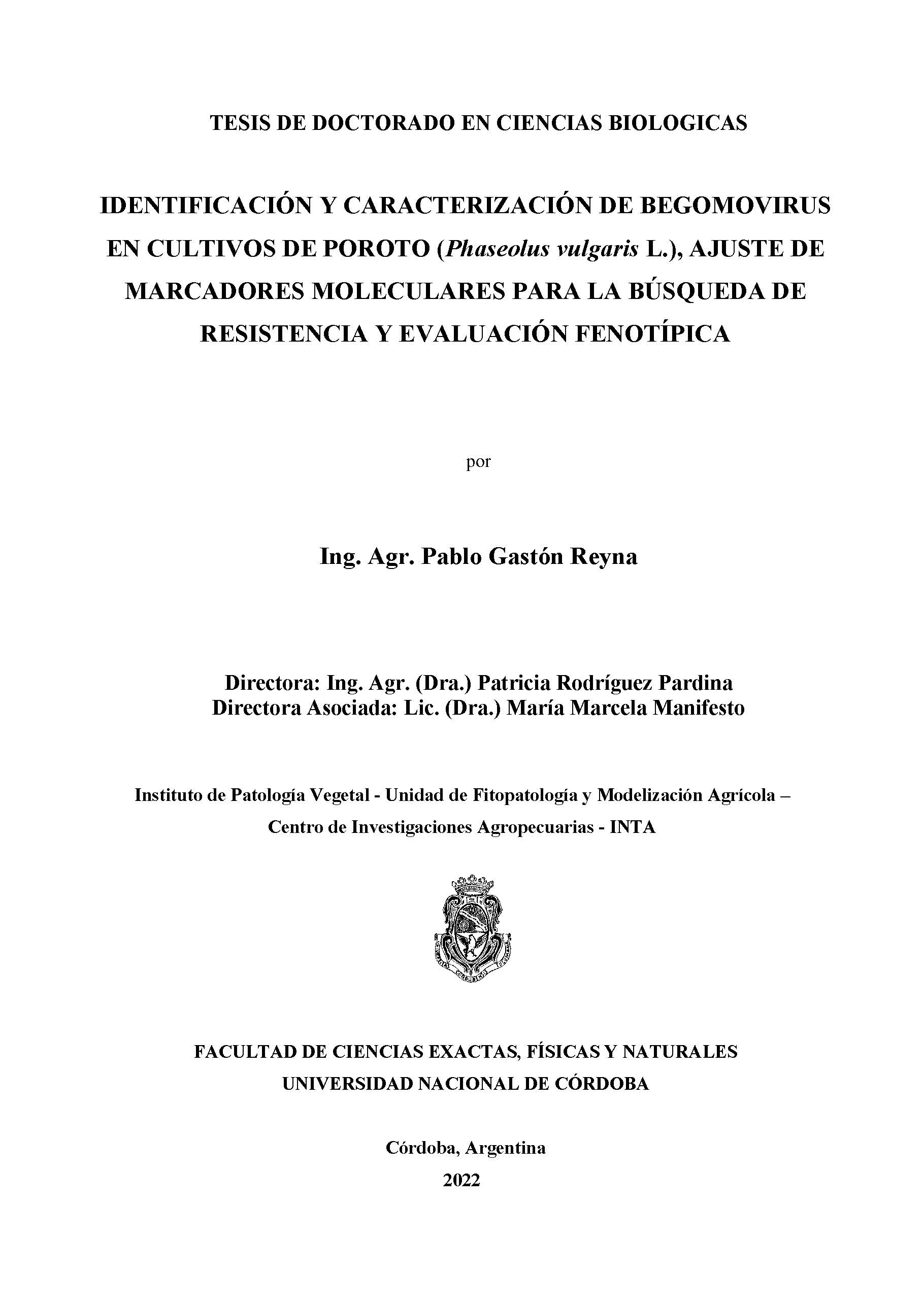Ver ítem
- xmlui.general.dspace_homeCentros e Institutos de InvestigaciónCIAP. Centro de Investigaciones AgropecuariasInstituto de Patología VegetalTesisxmlui.ArtifactBrowser.ItemViewer.trail
- Inicio
- Centros e Institutos de Investigación
- CIAP. Centro de Investigaciones Agropecuarias
- Instituto de Patología Vegetal
- Tesis
- Ver ítem
Identificación y caracterización de begomovirus en cultivos de poroto (Phaseolus Vulgaris l.), ajuste de marcadores moleculares para la búsqueda de resistencia y evaluación fenotípica
Resumen
Dentro del conjunto de legumbres secas, el poroto (Phaseolus vulgaris L.) constituye un cultivo relevante que es producido en áreas tropicales y subtropicales del mundo. En Argentina, bajo condiciones de secano y en forma extensiva, es cultivado en la región noroeste. Existen diversos factores que afectan la estabilidad de su producción, entre ellos se destacan las enfermedades virales ocasionadas por begomovirus.
Los objetivos del presente trabajo
[ver mas...]
Dentro del conjunto de legumbres secas, el poroto (Phaseolus vulgaris L.) constituye un cultivo relevante que es producido en áreas tropicales y subtropicales del mundo. En Argentina, bajo condiciones de secano y en forma extensiva, es cultivado en la región noroeste. Existen diversos factores que afectan la estabilidad de su producción, entre ellos se destacan las enfermedades virales ocasionadas por begomovirus.
Los objetivos del presente trabajo fueron: (i) Detectar la presencia de begomovirus en lotes de producción de poroto y en malezas aledañas en Argentina, (ii) Identificar y caracterizar nuevas especies, (iii) Determinar su probabilidad de incidencia a través de variables biometeorológicas, (iv) Evaluar el comportamiento de cultivares de poroto frente a sus infecciones y (v) Analizar una selección de germoplasma a través del ajuste de marcadores moleculares ligados a genes de resistencia a estos patógenos.
[Cerrar]
Within the dry legumes, the common bean (Phaseolus vulgaris L.) constitutes a relevant crop which is produced in tropical and subtropical áreas of the world. In Argentina, is cultivated under dry and extensive conditions in the northwestern region. There are several factors that affect the stability of its production, among them are viral diseases caused by begomoviruses.
The objectives of this work were: (i) To detect the presence of begomoviruses in
[ver mas...]
Within the dry legumes, the common bean (Phaseolus vulgaris L.) constitutes a relevant crop which is produced in tropical and subtropical áreas of the world. In Argentina, is cultivated under dry and extensive conditions in the northwestern region. There are several factors that affect the stability of its production, among them are viral diseases caused by begomoviruses.
The objectives of this work were: (i) To detect the presence of begomoviruses in bean production fields and neighboring weeds in Argentina, (ii) To identify and characterize new begomovirus species, (iii) To determine their probability of incidence through biometeorological variables, (iv) To evaluate the behavior of common bean cultivars against begomovirus infections and (v) To evaluate a selection of germplasm through the adjustment of molecular markers linked to resistance genes to these pathogens.
[Cerrar]

Autor
Descripción
Tesis para obtener el grado de Doctor en Ciencias Biológicas, presentada en la Universidad Nacional de Córdoba, en 2022
Fecha
2022-12-20
Editorial
Facultad de Ciencias Exactas, Físicas y Naturales, Universidad Nacional de Córdoba
Formato
pdf
Tipo de documento
tesis doctoral
Palabras Claves
Derechos de acceso
Abierto
 Excepto donde se diga explicitamente, este item se publica bajo la siguiente descripción: Creative Commons Attribution-NonCommercial-ShareAlike 2.5 Unported (CC BY-NC-SA 2.5)
Excepto donde se diga explicitamente, este item se publica bajo la siguiente descripción: Creative Commons Attribution-NonCommercial-ShareAlike 2.5 Unported (CC BY-NC-SA 2.5)


